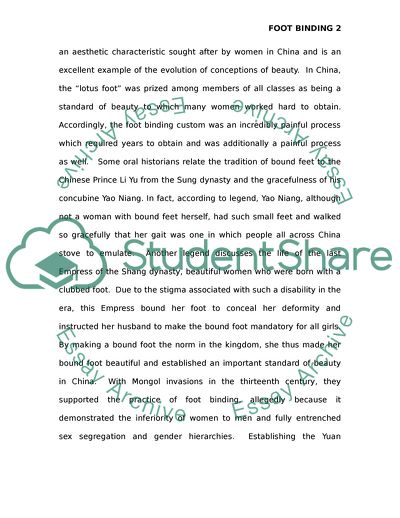Cite this document
(Thorough Analysis of Foot Binding in China Coursework, n.d.)
Thorough Analysis of Foot Binding in China Coursework. Retrieved from https://studentshare.org/culture/1717416-asian-foot-binding-how-and-why
Thorough Analysis of Foot Binding in China Coursework. Retrieved from https://studentshare.org/culture/1717416-asian-foot-binding-how-and-why
(Thorough Analysis of Foot Binding in China Coursework)
Thorough Analysis of Foot Binding in China Coursework. https://studentshare.org/culture/1717416-asian-foot-binding-how-and-why.
Thorough Analysis of Foot Binding in China Coursework. https://studentshare.org/culture/1717416-asian-foot-binding-how-and-why.
“Thorough Analysis of Foot Binding in China Coursework”. https://studentshare.org/culture/1717416-asian-foot-binding-how-and-why.


